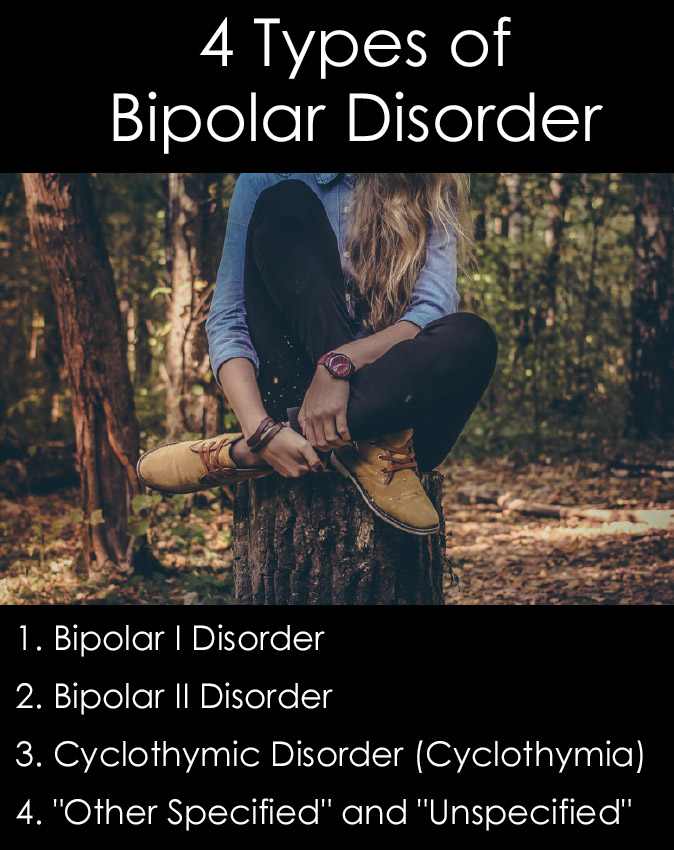
It’s important to understand the 4 types of bipolar disorder and how they can impact substance use.
While the public’s perception of recovery is commonly watered down to a simple solution of detox, 12-steps, and willpower, proper mental health and addiction treatment is actually far more complicated.
While a commitment to abstinence and accountability works for some, this is not a practical option for many people struggling with substance use disorders.
It’s necessary to realize there is no one-size-fits-all solution for addiction, and it is vital that all cases are treated independently and tailored to the needs of each client. Because no two addictions look alike, no two treatments should look alike either.
While the direct cause of addiction is unknown, it is not uncommon for those battling substance use disorders to have a history of mental illness or other existing mental health conditions.
Common co-occurring disorders of mental health and addiction include PTSD, depression, eating disorders, anxiety, and the various types of bipolar disorder.
The Prevalence of Bipolar Disorder
Did you know that bipolar disorder is a mental health condition that affects nearly 6 millions Americans?
According to the World Health Organization, bipolar is the 6th leading cause of disability in the world.
To many, this statistic comes as a surprise. The stigma surrounding mental health disorders has taught the public that those with bipolar are easy to recognize due to their dramatic mood fluctuations and erratic behavior, a misconception that had lead many to believe that it is relatively uncommon.
This is far from the truth and there are many celebrities and famous people with bipolar disorder who have been outspoken about their experience with the condition and how they have been able to manage it.
To recognize the symptoms of this mental health condition, it’s important to understand the differences between the four types of bipolar disorder.

What are the 4 Types of Bipolar Disorder?
There are similarities and differences between the four types of bipolar disorder, although all of them include changes in mood, energy levels, and emotional states.
They can all be characterized by positive periods of being happy, full of energy, and expressing an upbeat mood, commonly referred to as “mania,” or “manic episodes.”
The flipside of manic episodes, is a negative period of low energy, sadness, and depression, known as “depressive episodes.” Sometimes these periods are mild in comparison and called “hypomanic episodes.”
Four Types of Bipolar Disorder
1. Bipolar Type I
Bipolar Type I is characterized by at least one manic episode that lasts at least one week and often requires hospitalization.
In Bipolar Type I, mania and depression may also be present for sveral weeks at a time, and occasionally co-occur with mania. When this happens, it may require hospitalization and observation along with treatment.
Many people with Bipolar Type I encounter manic and depressive episodes, yet it is not necessary to have a depressive episode to be diagnosed with this type of bipolar.
2. Bipolar Type II Disorder
Bipolar II Disorder is characterized for people who exhibit at least one episode of depression and one episode of hypomania.
While the hypomanic episodes are not as extreme as manic episodes, they have similar symptoms like racing thoughts, excessive speech, euphoria, and a decreased need for sleep.
3. Cyclothymic Disorder (also known as Cyclothymia)
Cyclothymic Disorder, or Cyclothymia, is described as having various hypomanic episodes combined with various depressive episodes that last for two or more years for adults, and one year for teens and younger.
A diagnosis of this type of bipolar is commonly accompanied by regularly unstable moods that include normal periods, but these only last for approximately eight weeks or less.
4. “Other Specified” and “Unspecified” Bipolar
“Other Specified” and “Unspecified” Bipolar and related disorders are usually marked by other bipolar symptoms that do not match the other three types of bipolar categories.
This occurs when a person does not meet the diagnostic criteria for Bipolar Type I, Bipolar II Disorder, or Cyclothymia, although they still show signs and symptoms of mood abnormalities.
While the four types of bipolar disorder share common symptoms, the severity of the symptoms vary dramatically. Because of this, not all cases of bipolar disorder are easily detectable, making it far more common to diagnose than most people realize.

The Substance Use Addiction Connection to the Types of Bipolar Disorder
Bipolar disorder is the most common mood disorder to co-occur with substance misuse. In fact, nearly 60% of those diagnosed with Bipolar Type I and 48% of those with Bipolar II Disorder also reported a history of substance use dependence.
While the cause for each individual case of co-occurring bipolar and addiction varies, there are a several common factors.
Self-Medication: Many of those suffering from bipolar disorder turn to substances in an attempt to regulate the irritability that often comes with manic episodes and elevated mood, or depression and low moods.
Mood Disruption: Substance abuse is known to rewire the brain by disrupting the dopamine reward system. For some, substance dependence creates changes in the brain that can trigger bipolar disorder.
Regardless of whether the substance use disorder or bipolar disorder occurred first, those suffering from these conditions simultaneously must be treated with Dual Diagnosis Treatment.
Dual diagnosis is the simultaneous treatment of two disorders. At Alo House, we understand that this is essential for recovery. Treating one disorder without treating the other at the same time is an ineffective solution, as one often acts as a catalyst for the other.
When it comes to bipolar disorder and addiction treatment, a combination of medication and psychiatric counseling is typically the most effective. This is why we are committed to providing proper medical care while utilizing evidence-based therapy methods.

Awareness of the Different Types of Bipolar Disorder
In an attempt to eliminate the social stigma and spread awareness about the different types of bipolar disorder, March 30th of each year has been deemed World Bipolar Day (WBD).
World Bipolar Day is an initiative started by the International Bipolar Foundation (IBPF) in collaboration with the Asian Network of Bipolar Disorder (ANBD) and the International Society for Bipolar Disorders (ISBD).
The date of March 30th was selected as it is the birthday of Vincent Van Gogh, who is believed to have suffered from bipolar disorder.
On this day, organizations from around the world host events intended to educate and increase sensitivity surrounding bipolar disorder. To join the conversation and see the stories of others online, use the hashtags #WorldBipolarDay and #BipolarStrong.
Related Posts
- 23 Movies About Bipolar Disorder
Movies about bipolar disorder are popular because it is a mental health condition that impacts…
- 28 Celebrities and Famous People With Bipolar Disorder
It’s no surprise that there are many celebrities and famous people with bipolar disorder because…
- Borderline Personality Disorder vs Bipolar - Is BPD Worse?
Understanding and distinguishing the differences between Borderline Personality Disorder vs Bipolar Disorder can be difficult…
